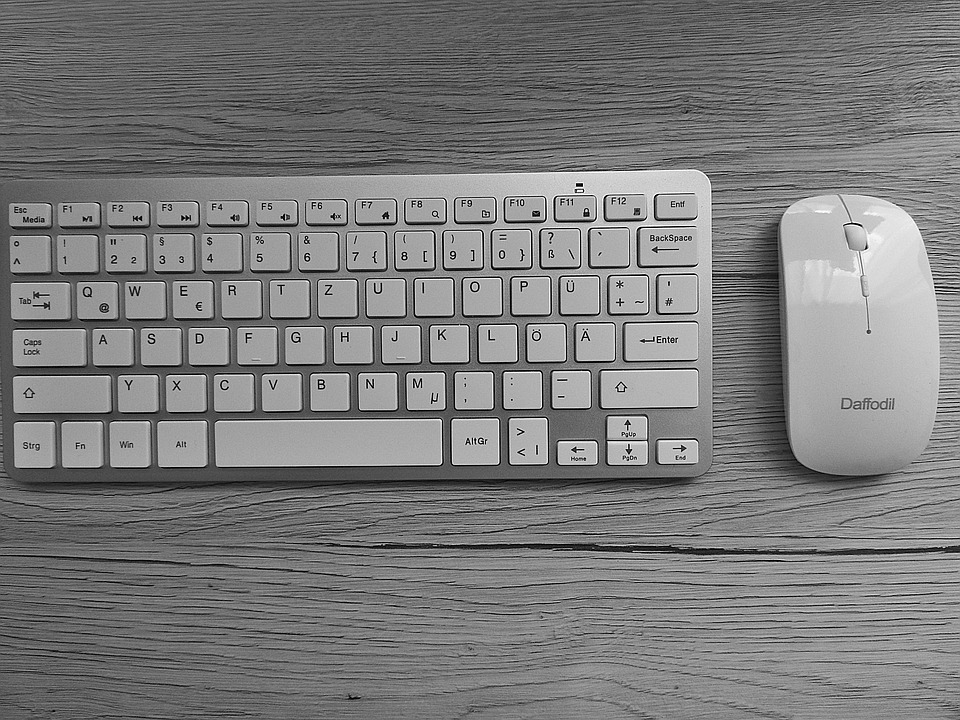Resiliency
The Role of Technology in Preventing Burnout: How to Use Tools to Your Advantage

Introduction
Employee burnout prevention is a pressing concern in today’s fast-paced work environment. With the constant demands of work, personal life, and social media, it’s easy to feel overwhelmed and exhausted. Burnout can lead to decreased productivity, increased absenteeism, and even turnover. However, technology can be a powerful tool in preventing burnout. In this article, we’ll explore the role of technology in preventing burnout and provide tips on how to use tools to your advantage.
Understanding Burnout
Before we dive into the role of technology in preventing burnout, it’s essential to understand what burnout is. Burnout is a state of emotional, mental, and physical exhaustion caused by prolonged stress, overwork, and lack of balance in life. It can manifest in various ways, including:
* Chronic fatigue
* Loss of motivation
* Decreased job satisfaction
* Increased irritability
* Reduced productivity
The Role of Technology in Preventing Burnout
Technology can play a significant role in preventing burnout by providing tools and resources that help manage stress, increase productivity, and promote work-life balance. Here are some ways technology can help:
### Time Management Tools
* Todo lists and task management apps like Trello, Asana, and Todoist help prioritize tasks and stay organized.
* Calendar apps like Google Calendar and Microsoft Outlook enable scheduling and reminders to stay on track.
* Pomodoro timers like Tomato Timer and Focus Booster help manage work intervals and breaks.
### Communication and Collaboration Tools
* Instant messaging apps like Slack and Microsoft Teams facilitate communication and reduce email clutter.
* Video conferencing tools like Zoom and Google Meet enable remote meetings and reduce travel time.
* Project management tools like Basecamp and Wrike help streamline collaboration and reduce misunderstandings.
### Self-Care and Wellness Tools
* Meditation and mindfulness apps like Headspace and Calm provide guided relaxation and stress-reduction techniques.
* Fitness and exercise apps like Fitbit and Nike Training Club encourage physical activity and healthy habits.
* Sleep tracking apps like Sleep Cycle and Pillow help monitor and improve sleep quality.
### Boundary Setting Tools
* Website blockers like Freedom and SelfControl help avoid distractions and stay focused.
* Email filters and newsletters like Sanebox and Unroll.me reduce email clutter and minimize distractions.
* Apps like RescueTime and Moment track screen time and provide insights on how to set healthy boundaries.
Using Technology to Your Advantage
To use technology to your advantage in preventing burnout, follow these tips:
### Set Boundaries
* Establish clear boundaries between work and personal life.
* Set specific work hours and avoid checking work emails or taking work calls outside of work hours.
* Use technology to block distracting websites or apps during work hours.
### Prioritize Self-Care
* Schedule self-care activities like meditation, exercise, or reading into your daily routine.
* Use technology to track and monitor your self-care habits.
* Prioritize sleep and aim for 7-8 hours of sleep each night.
### Stay Organized
* Use time management tools to prioritize tasks and stay organized.
* Set reminders and notifications to stay on track.
* Review and adjust your schedule regularly to ensure it’s working for you.
Conclusion
Preventing burnout requires a combination of effective time management, self-care, and boundary setting. Technology can be a powerful tool in achieving these goals. By using time management tools, communication and collaboration tools, self-care and wellness tools, and boundary setting tools, you can reduce stress, increase productivity, and promote work-life balance. Remember to set boundaries, prioritize self-care, and stay organized to use technology to your advantage in preventing burnout.
FAQs
Q: What are some common signs of burnout?
A: Common signs of burnout include chronic fatigue, loss of motivation, decreased job satisfaction, increased irritability, and reduced productivity.
Q: How can I prioritize self-care in my daily routine?
A: Schedule self-care activities like meditation, exercise, or reading into your daily routine. Use technology to track and monitor your self-care habits.
Q: What are some effective time management tools?
A: Effective time management tools include Todo lists and task management apps like Trello, Asana, and Todoist, calendar apps like Google Calendar and Microsoft Outlook, and Pomodoro timers like Tomato Timer and Focus Booster.
Q: How can I set healthy boundaries between work and personal life?
A: Establish clear boundaries between work and personal life by setting specific work hours, avoiding checking work emails or taking work calls outside of work hours, and using technology to block distracting websites or apps during work hours.
Resiliency
Navigating Project Setbacks Effectively

Project management is a complex and multifaceted field that involves planning, organizing, and controlling resources to achieve specific goals and objectives. One of the key challenges that project managers face is navigating setbacks, which can range from minor delays to major crises. Setbacks can occur due to various reasons, including unforeseen circumstances, poor planning, or inadequate resources.
Understanding the Nature of Setbacks
Setbacks are an inevitable part of any project, and project managers need to be prepared to handle them. Setbacks can be categorized into two types: internal and external. Internal setbacks occur due to factors within the project team, such as lack of skills or resources, while external setbacks occur due to factors outside the project team, such as changes in market conditions or unexpected events.
Identifying Potential Setbacks
Project managers can identify potential setbacks by conducting a thorough risk assessment at the beginning of the project. This involves identifying potential risks, assessing their likelihood and impact, and developing strategies to mitigate or avoid them. Project managers should also establish a system for monitoring and reporting progress, which can help to identify potential setbacks early on.
Developing a Contingency Plan
A contingency plan is a document that outlines the steps to be taken in the event of a setback. The plan should include a list of potential setbacks, their likelihood and impact, and the strategies to be used to mitigate or avoid them. The plan should also include a communication strategy, which outlines how stakeholders will be informed of setbacks and progress.
Implementing a Setback Recovery Plan
When a setback occurs, project managers need to implement a recovery plan to get the project back on track. This involves assessing the impact of the setback, identifying the root cause, and developing a plan to mitigate or avoid it. Project managers should also communicate the setback and the recovery plan to stakeholders, and provide regular updates on progress.
Communicating with Stakeholders
Communication is critical when navigating setbacks. Project managers need to communicate the setback and the recovery plan to stakeholders, including team members, sponsors, and customers. The communication should be transparent, honest, and timely, and should include information on the cause of the setback, the impact on the project, and the steps being taken to recover.
Building Resilience
Building resilience is critical for project managers to navigate setbacks. Resilience involves the ability to absorb and recover from setbacks, and to adapt to changing circumstances. Project managers can build resilience by developing a growth mindset, building a strong support network, and practicing self-care.
Learning from Setbacks
Setbacks can provide valuable learning opportunities for project managers. By analyzing the cause of the setback and the steps taken to recover, project managers can identify areas for improvement and develop strategies to avoid similar setbacks in the future.
Implementing Changes
Project managers should implement changes to the project plan and processes to avoid similar setbacks in the future. This may involve updating the risk management plan, revising the project schedule, or changing the project team.
Conclusion
Navigating setbacks is a critical aspect of project management. By understanding the nature of setbacks, identifying potential setbacks, developing a contingency plan, implementing a setback recovery plan, communicating with stakeholders, building resilience, and learning from setbacks, project managers can minimize the impact of setbacks and ensure that projects are delivered on time, within budget, and to the required quality standards.
FAQs
- What is a setback in project management?
A setback is an unexpected event or circumstance that can impact the progress of a project. - How can project managers identify potential setbacks?
Project managers can identify potential setbacks by conducting a thorough risk assessment at the beginning of the project. - What is a contingency plan?
A contingency plan is a document that outlines the steps to be taken in the event of a setback. - How can project managers communicate setbacks to stakeholders?
Project managers should communicate setbacks to stakeholders in a transparent, honest, and timely manner, and provide regular updates on progress. - How can project managers build resilience?
Project managers can build resilience by developing a growth mindset, building a strong support network, and practicing self-care.
Resiliency
How to Find Balance Between Work and Life (Without Burning Out)

Many of us struggle to balance our jobs with personal responsibilities. When that balance is off, it can lead to stress, burnout, and feeling overwhelmed. Over time, this affects not just our work performance, but our health and happiness too.
Let’s talk about why work-life balance is important, what challenges can get in the way, and how you can take small steps to improve it.
Why Work-Life Balance Is So Important
Work-life balance means giving time and energy to both your job and your personal life. When this balance is healthy, you feel more in control, less stressed, and more satisfied at work and at home.
It’s not about being perfect. It’s about making space for what matters—both professionally and personally.
The Benefits of Work-Life Balance
1. Less Stress and Burnout
When you have time for yourself, you’re less likely to feel overwhelmed or emotionally drained. You recover better and stay mentally strong.
2. More Focus and Productivity
When you’re not stretched too thin, you’re able to concentrate better during work hours and get more done in less time.
3. Higher Job Satisfaction
Balancing work and life helps you enjoy your job more and stay motivated, without feeling resentful or exhausted.
Common Challenges That Get in the Way
1. Blurred Lines Between Work and Home
Thanks to phones and laptops, work follows us everywhere. It’s hard to “turn off” when emails and messages keep coming after hours.
2. Long Work Hours
Overtime or shift work can eat into family time and leave little room for rest or fun.
3. Lack of Support
When employers or loved ones don’t understand your need for balance, it becomes harder to set limits or ask for help.
5 Simple Tips to Improve Your Work-Life Balance
1. Set Boundaries
Decide when your workday starts and ends—and stick to it. Don’t check emails or take calls outside of those hours.
2. Make Time for You
Even 15–30 minutes a day of self-care—like walking, reading, or meditating—can make a big difference.
3. Say No When You Need To
Protect your time. You don’t have to say yes to everything, especially if it takes away from your personal priorities.
4. Talk to Your Manager
If your workload is too heavy or unclear, have a respectful conversation about your needs. You might be surprised how open they are to finding a solution.
5. Take Real Breaks
Step away from your screen during the day. A short break helps clear your mind and boosts your energy.
Final Thoughts
Work-life balance isn’t just a nice-to-have—it’s a must. Taking care of yourself helps you show up better in every area of life. You don’t need to overhaul everything overnight. Start with one small change, and build from there.
Remember: balance looks different for everyone. Find what works best for you and protect it like your peace depends on it—because it does.
FAQs
Q: How do I know if I need better work-life balance?
A: If you’re always tired, stressed, or feel like you never have time for yourself, it’s a sign that something needs to shift.
Q: I work from home—how can I create balance?
A: Try setting regular work hours, having a dedicated workspace, and taking short breaks throughout the day. Also, shut down your work devices after hours.
Q: How do I talk to my boss about this?
A: Be honest and respectful. Explain your concerns, share what you need, and suggest solutions that benefit both you and the team.
Resiliency
The Power of Flexibility: How Adapting to Change Can Enhance Your Career and Job Satisfaction

In today’s fast-paced and ever-changing work environment, adapting to change is essential for career growth and job satisfaction. The ability to be flexible and adaptable can make a significant difference in one’s career, helping them to navigate the ups and downs of the job market and achieve their professional goals. In this article, we’ll explore the power of flexibility and how it can enhance your career and job satisfaction.
The Importance of Adapting to Change
Change is inevitable in any organization, and it’s crucial to be prepared to adapt to new situations, processes, and technologies. When you’re able to adapt quickly and effectively, you’ll be better equipped to handle the challenges that come with change, and you’ll be more likely to thrive in a rapidly changing work environment.
Benefits of Flexibility in the Workplace
Increased Job Security
When you’re able to adapt to change, you’re more likely to be seen as a valuable asset to your organization. This can lead to increased job security, as your employer will be more likely to keep you on board due to your ability to adapt to new situations and challenges.
Improved Communication
Flexibility in the workplace also improves communication and collaboration. When team members are able to adapt to new situations, they’re more likely to be able to communicate effectively and work together to achieve common goals.
Enhanced Creativity
Adaptability can also lead to enhanced creativity and problem-solving skills. When faced with new challenges, flexible employees are more likely to think outside the box and come up with innovative solutions.
How to Develop Flexibility in the Workplace
Open-Mindedness
One of the key traits of a flexible employee is an open mind. When you’re open to new ideas and perspectives, you’re more likely to be able to adapt to change and new situations.
Effective Communication
Effective communication is also essential for flexibility in the workplace. When you’re able to clearly communicate with your team and colleagues, you’ll be better equipped to adapt to new situations and challenges.
Embracing Uncertainty
Finally, embracing uncertainty is key to flexibility in the workplace. When you’re able to accept that change is inevitable and that uncertainty is a natural part of the process, you’ll be better equipped to adapt to new situations and challenges.
Conclusion
In conclusion, flexibility is a vital trait for success in today’s fast-paced and ever-changing work environment. By being open-minded, effective in communication, and embracing uncertainty, you’ll be better equipped to adapt to change and achieve your career goals. Remember, the power of flexibility can lead to increased job security, improved communication, and enhanced creativity. By embracing flexibility, you’ll be better equipped to navigate the ups and downs of the job market and achieve the job satisfaction you deserve.
FAQs
Q: What are some common challenges that can make it difficult to adapt to change?
A: Some common challenges that can make it difficult to adapt to change include resistance to change, lack of clear communication, and inadequate training or support.
Q: What are some strategies for overcoming these challenges?
A: Some strategies for overcoming these challenges include seeking out additional training or support, communicating openly with colleagues and management, and focusing on the benefits of change, rather than the difficulties.
Q: How can I demonstrate my flexibility to my employer?
A: Demonstrating your flexibility to your employer can be as simple as being open to new ideas and perspectives, being willing to take on new responsibilities, and showing a willingness to learn and adapt to new situations and challenges.
Q: What are some common myths about flexibility in the workplace?
A: Some common myths about flexibility in the workplace include the idea that being flexible means being able to work long hours or be available 24/7, or that being flexible means sacrificing personal time or priorities. In reality, flexibility is about being able to adapt to new situations and challenges, while still maintaining a healthy work-life balance.
Q: How can I prioritize my own flexibility and self-care in the workplace?
A: Prioritizing your own flexibility and self-care in the workplace can be achieved by setting clear boundaries, taking regular breaks, and practicing stress-reducing techniques, such as meditation or deep breathing exercises.
-

 Career Advice4 months ago
Career Advice4 months agoInterview with Dr. Kristy K. Taylor, WORxK Global News Magazine Founder
-

 Diversity and Inclusion (DEIA)4 months ago
Diversity and Inclusion (DEIA)4 months agoSarah Herrlinger Talks AirPods Pro Hearing Aid
-

 Career Advice4 months ago
Career Advice4 months agoNetWork Your Way to Success: Top Tips for Maximizing Your Professional Network
-

 Changemaker Interviews3 months ago
Changemaker Interviews3 months agoUnlocking Human Potential: Kim Groshek’s Journey to Transforming Leadership and Stress Resilience
-

 Diversity and Inclusion (DEIA)4 months ago
Diversity and Inclusion (DEIA)4 months agoThe Power of Belonging: Why Feeling Accepted Matters in the Workplace
-

 Global Trends and Politics4 months ago
Global Trends and Politics4 months agoHealth-care stocks fall after Warren PBM bill, Brian Thompson shooting
-

 Global Trends and Politics4 months ago
Global Trends and Politics4 months agoUnionization Goes Mainstream: How the Changing Workforce is Driving Demand for Collective Bargaining
-

 Training and Development4 months ago
Training and Development4 months agoLevel Up: How Upskilling Can Help You Stay Ahead of the Curve in a Rapidly Changing Industry








